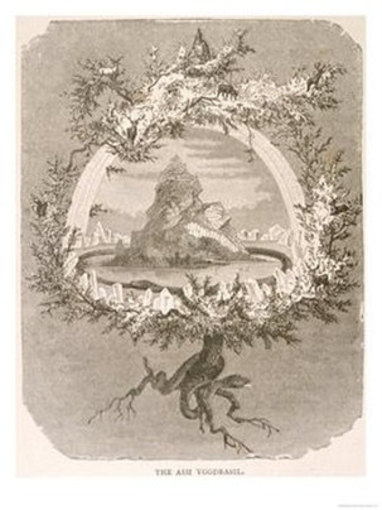Sign in or 

| Version | User | Scope of changes |
|---|---|---|
| Oct 14 2014, 8:23 PM EDT (current) | shootingstarbaby | 373 words added, 2 words deleted |
| Oct 16 2011, 4:34 PM EDT | *Loki | 1 word deleted |
 Norse Mythology: pre-ChristianPre-Christian religious beliefs of the Norse people. The Norse legends and myths about ancient heroes, gods, and the creation and destruction of the universe developed out of the original common mythology of the Germanic peoples and constitute the primary source of knowledge about ancient German mythology. Because Norse mythology was transmitted and altered by medieval Christian historians, the original pagan religious beliefs, attitudes, and practices cannot be determined with certainty. Clearly, however, Norse mythology developed slowly, and the relative importance of different gods and heroes varied at different times and places. Thus, the cult of Odin, chief of the gods, may have spread from western Germany to Scandinavia not long before the myths were recorded; minor gods including Ull, the fertility god Njord, and Heimdallmay represent older deities who lost strength and popularity as Odin became more important. Odin, a god of war, was also associated with learning, wisdom, poetry, and magic.
Norse Mythology: pre-ChristianPre-Christian religious beliefs of the Norse people. The Norse legends and myths about ancient heroes, gods, and the creation and destruction of the universe developed out of the original common mythology of the Germanic peoples and constitute the primary source of knowledge about ancient German mythology. Because Norse mythology was transmitted and altered by medieval Christian historians, the original pagan religious beliefs, attitudes, and practices cannot be determined with certainty. Clearly, however, Norse mythology developed slowly, and the relative importance of different gods and heroes varied at different times and places. Thus, the cult of Odin, chief of the gods, may have spread from western Germany to Scandinavia not long before the myths were recorded; minor gods including Ull, the fertility god Njord, and Heimdallmay represent older deities who lost strength and popularity as Odin became more important. Odin, a god of war, was also associated with learning, wisdom, poetry, and magic.